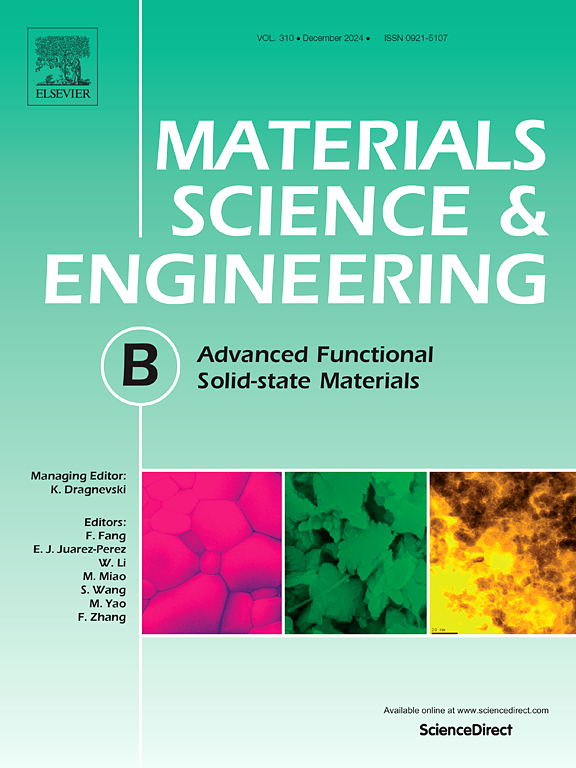利用SCAPS-1D研究带隙和亚电池厚度对无铅CsSnX3/Si串联太阳能电池性能的影响
IF 4.6
3区 材料科学
Q2 MATERIALS SCIENCE, MULTIDISCIPLINARY
引用次数: 0
摘要
本研究利用SCAPS-1D软件系统研究了带隙和亚电池厚度对无铅钙钛矿CsSnX3/Si串联太阳能电池性能的影响。利用无铅钙钛矿材料成功研制了高效串联太阳能电池。通过对CsSnX3中x位元素比例的梯度调节来调制带隙。同时,分析了带隙、缺陷密度和电子/空穴热速度对电池性能的影响。顶部为FTO/CuI/CsSnX3/ZnOS结构单元,底部为a-Si(p+)/a-Si:H(i)/c-Si/a-Si:H(i)/a-Si(n+)结构单元。当采用217 nm厚(带隙1.78 eV)的顶部亚电池和250 μm厚的底部亚电池时,串联太阳能电池的效率达到了33.03%。该研究在电流匹配、缺陷密度选择和电子/空穴热速度控制等方面为高效无铅钙钛矿串联太阳能电池的开发提供了重要的理论指导和实践见解。本文章由计算机程序翻译,如有差异,请以英文原文为准。

Investigation of bandgaps and thicknesses of sub-cells on the performance of lead-free CsSnX3/Si tandem solar cells via SCAPS-1D
In this study, the influence of bandgap and thickness of sub-cells on lead-free perovskite CsSnX3/Si tandem solar cells was systematically investigated using the SCAPS-1D software. A highly efficient tandem solar cell was successfully developed utilizing lead-free perovskite materials. The bandgap is modulated through the gradient regulation of the proportion of X-site elements in CsSnX3. Meanwhile, the effects of bandgap, defect density and electron/hole thermal velocity on cell performance were analyzed. The top sub-cell was FTO/CuI/CsSnX3/ZnOS cell, while the bottom sub-cell was structured a-Si(p+)/a-Si:H(i)/c-Si/a-Si:H(i)/a-Si(n+) cell. The tandem solar cell achieves champion efficiency of 33.03% when configured with a top sub-cell that is 217 nm thick (bandgap = 1.78 eV) and a bottom sub-cell that is 250 μm thick. This study offers significant theoretical guidance and practical insights for the development of highly efficient lead-free perovskite tandem solar cells in terms of current matching, defect density selection and electron/hole thermal velocity control.
求助全文
通过发布文献求助,成功后即可免费获取论文全文。
去求助
来源期刊

Materials Science and Engineering: B
工程技术-材料科学:综合
CiteScore
5.60
自引率
2.80%
发文量
481
审稿时长
3.5 months
期刊介绍:
The journal provides an international medium for the publication of theoretical and experimental studies and reviews related to the electronic, electrochemical, ionic, magnetic, optical, and biosensing properties of solid state materials in bulk, thin film and particulate forms. Papers dealing with synthesis, processing, characterization, structure, physical properties and computational aspects of nano-crystalline, crystalline, amorphous and glassy forms of ceramics, semiconductors, layered insertion compounds, low-dimensional compounds and systems, fast-ion conductors, polymers and dielectrics are viewed as suitable for publication. Articles focused on nano-structured aspects of these advanced solid-state materials will also be considered suitable.
 求助内容:
求助内容: 应助结果提醒方式:
应助结果提醒方式:


